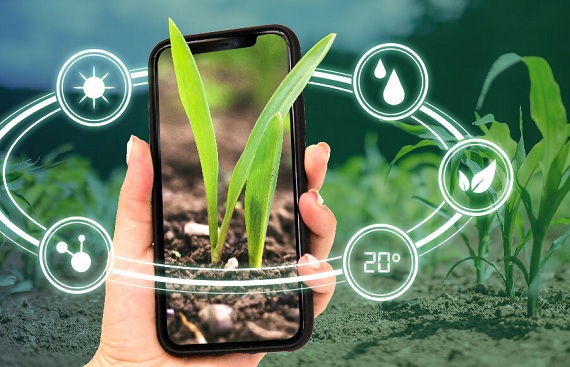AgriStack : How the technology impact through Agriculture's New Digital Push

AgriStack is an innovative technology stack designed to provide farmers with granular information on crop selection, market trends, and formal credit arrangements. The stack will incorporate various technology tools such as satellite imagery, weather forecasting, and soil sensors to offer farmers valuable insights into their farming operations. It has the potential to revolutionize the agricultural sector by providing farmers with the tools they need to make informed decisions, increase their productivity, and ultimately improve their livelihoods.
India's livelihood, civilization, culture, and legacy based on agriculture. With 1.39 billion people, India is the second-most populous nation in the world and is predicted to pass China in population by 2027–2030. India is the seventh-largest country in the world, with 328 million hectares (Mha) of land. After the US, India has the second-largest amount of arable land at 160 Mha. Digital technology is increasing global connectivity. Mobile devices are used in more minor, faster, cheaper, and more effective ways. Assistance is being provided to help businesses and farmers make better decisions.
The "Green Revolution," which started in the 1960s and assisted the nation in making significant breakthroughs in domestic food production, agriculture, and allied disciplines, is commonly linked to Indian agriculture. With the help of this industry, India went from having a food deficit to having a surplus of food and an emphasis on exports. Agriculture and allied businesses undoubtedly provide most of India's income, particularly in the country's extensive rural areas. Agriculture is made up of numerous intricately linked processes. For a decent yield, it should be organised into effective stages. A given product's success is determined by a triangle made up of the farmer, technology, and the service and consultancy idea. Agriculture will eventually become digitalized, just as other sectors of the economy.
How AgriStack technology is impacting agriculture
![]()
Precision farming: AgriStack technology includes precision farming techniques that use data analytics, sensors, and satellite imagery to improve crop yield, reduce input costs, and minimize environmental impact. For example, precision agriculture enables farmers to optimize the use of water, fertilizer, and pesticides, reducing waste and minimizing environmental impact.
Internet of Things (IoT) devices: IoT devices are increasingly being used in agriculture to monitor crop health, soil moisture, and other critical parameters. These devices can be integrated with other agricultural technologies, such as drones and autonomous tractors, to automate farming operations and reduce labor costs.
Blockchain technology: Blockchain technology is being used to enhance the transparency and traceability of the food supply chain. By using blockchain, farmers can track their products from the farm to the table, ensuring food safety and quality.
Artificial intelligence (AI): AI is being used in agriculture to optimize crop yield and reduce waste. For example, AI algorithms can analyze data from sensors and other devices to predict weather patterns, soil moisture levels, and other factors that impact crop growth.
Implementations on agriculture sector
![]()
Governments use digital technologies to improve the effectiveness and efficiency of current policies and programs and create new ones. For instance, the availability of free, high-quality satellite photography drastically reduces the expense of monitoring various agricultural activities. This would enable governments to adopt more specialized policies that compensate farmers as per environmental effects noticed.
Digital technologies enable new ways for governments to monitor and ensure compliance with standards and to provide quicker and more effective border procedures, which are crucial for perishable goods. These technologies can also support trade in agriculture and food products by connecting private-sector suppliers to new markets. Agriculture and the food system are evolving due to the Internet, mobile technology, data analytics, artificial intelligence, digitally delivered services, and apps.
The Digital India Plan, which intends to overhaul India's public service sector digitally, was introduced by the Indian government in 2015. With a 14% GDP share, agriculture, the largest employment sector, is crucial to this digital initiative. Due to mechanization and knowledge dissemination initiatives, India has seen a significant improvement in yields and crop diversification, despite rising consumption due to population growth and increasing wealth.
Final Note
AgriStack technology is revolutionizing the agriculture sector in India, providing farmers with new tools and methods to improve crop yield, reduce input costs, and minimize environmental impact. With the implementation of precision farming, IoT devices, blockchain technology, and AI, farmers can optimize their farming operations, increase efficiency, and ensure food safety and quality. Governments are also leveraging digital technologies to monitor compliance with standards, support trade in agriculture and food products, and provide better public services. The Digital India Plan is a step in the right direction, and its success in the agriculture sector can pave the way for the digital transformation of other industries. By embracing technology, India can achieve sustainable growth, improve the livelihoods of its citizens, and secure its position as a global leader in agriculture.
